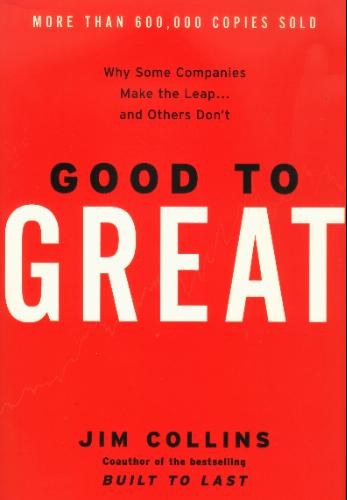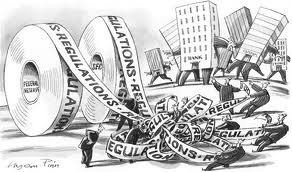Are You Confronting the Brutal Facts?
 We have had a nice run in the markets over the past few weeks, hitting record highs for seven consecutive days. It would seem like good times ahead and I would so much like to jump on that bandwagon. I have seen this before and it makes me very cautious, given what is probably ahead. With any market and economic difficulties, there is always opportunity. The key signature of the DNA in a real entrepreneur is always being in search of opportunities in any environment, and then acting on them.
We have had a nice run in the markets over the past few weeks, hitting record highs for seven consecutive days. It would seem like good times ahead and I would so much like to jump on that bandwagon. I have seen this before and it makes me very cautious, given what is probably ahead. With any market and economic difficulties, there is always opportunity. The key signature of the DNA in a real entrepreneur is always being in search of opportunities in any environment, and then acting on them.
When looking for opportunities, we must first practice the Stockdale Paradox, which is coined by Jim Collins in his book Good to Great. In the book, Admiral Jim Stockdale makes observations of those that survived being prisoners of war in Vietnam and those that did not. Admiral Stockdale was there for eight years and endured the most brutal of situations.
When asked “Who did not make it out?” Stockdale replied, “The optimist.” He shared that they would say, we will be out by Christmas, Easter, and Thanksgiving, and when those markers came and went, the POWs would die of broken hearts.
He went on to say to Jim “This is a very important lesson. You must never confuse faith that you will prevail in the end – which you can never afford to lose –with the discipline to confront the most brutal facts of your current reality, whatever it may be.”
So what are the brutal facts of our reality? We have a huge amount of debt ($16 trillion) that is as much as the combined total of all the goods and services transacted in one year for the US economy. Each year the bureaucrats are spending $1 trillion more than they take in from taxes, so we are adding a trillion to the total debt each year. The worst part is they don’t show any desire to stop spending! We have major uncertainties of how all the tax increases, more government controls, and medical health care changes will affect our businesses.
The fear and uncertainty makes people sit and wait it out, for the most part. We are experiencing some positives now because of pent-up demand. Some areas don’t have enough new homes to account for the demand. Some businesses are spending on things that they have been putting off for a long time and can’t wait any longer.
This is not the environment of record-breaking stock markets that means things will change. I was in the investment world when the Fed flooded the markets during the late 90s and worried about lots of things, but mainly Y2K. This money mostly went into stocks and drove the markets to a massive bubble that soon burst. Sadly, I watched my money and that of so many others lose unfathomable sums.
Because of the brutal facts and my experience, I am being careful about the markets and business investments. I am also keeping an eye on any opportunities that may arise, given major changes that may occur. Remember that companies like General Electric, IBM, Disney, Burger King, Microsoft and Apple, all were founded in major recession or great depression. Opportunities are not limited to the good times.


 The fact is, things are not good out there, but this does not mean that there is no money or opportunity.
The fact is, things are not good out there, but this does not mean that there is no money or opportunity.


 As I travel around the world, I listen to people talk and read the local papers to get a feel for how others view the global economy. It is interesting to try and see the world from their perspective. It seems that many people are just looking for their economies to get better and waiting for leaders to do something about it.
As I travel around the world, I listen to people talk and read the local papers to get a feel for how others view the global economy. It is interesting to try and see the world from their perspective. It seems that many people are just looking for their economies to get better and waiting for leaders to do something about it.